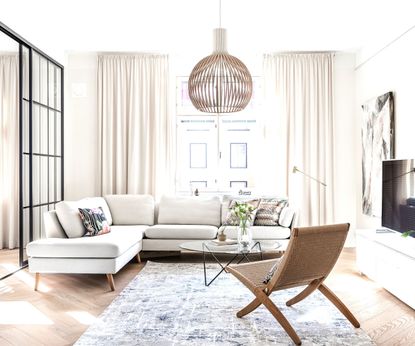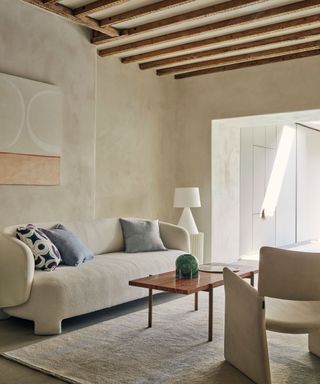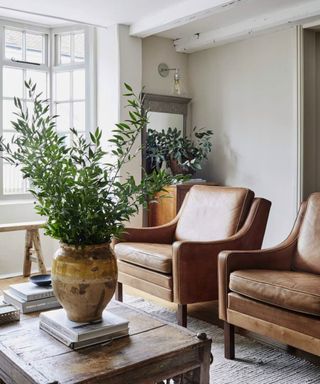How to create a 'self-care space' – 5 expert tips for a tranquil, purposeful home
These design decisions will give you a 'meaningful break from life' – according to designers and psychology experts


There is no denying that recent design movements have an emphasis on wellness. From minimalism and botanical motifs to the ever-growing interest in color psychology – it is clear that people crave a home that looks good and makes them feel good, too.
Enter; therefore, the aptly-named 'self-care space' – the latest interior design trend that prioritizes mental health and wellbeing – and its appeal is clear. These designated spaces (of all sizes) offer a 'meaningful break from life' through therapeutic decorating ideas – including mood lighting and house plants, naturally.
And while designers can advise on the best shapes and colors, psychology experts explain that your 'self-care space' is entirely personal – meaning many decisions come down to you. Here's how to get started.
How to create a 'self-care space'

Psychology professors Belle Liang and Timothy Klein recently published How to Navigate Life – a book that explores how to cut through stress and design a purposeful, meaningful life. Drawing from their principles, we asked them how to create a self-care space at home. They recommend designing for your energy.
Design for energy
You may have heard about energy in terms of bedroom feng shui, but Belle and Timothy's teaching differs from this ancient teaching.
'Ask yourself what you need a break from. Do you need a break from stress and anxiety? Are you feeling overwhelmed, irritated, or restless? You want to design for a calming, pleasant, tranquil, or serene space,' they say. Alternatively, if you crave a break from boredom and monotony, you should design a 'high-energy, inspiring space' that will make you feel more energized.
'If you’re living a stressful life, you want to design a pleasant and serene space. So, consider what makes you feel peaceful, balanced, tranquil, or serene,' they add. You should look for objects, colors, and other elements that promote the feeling you desire.
How to curate a serene space – according to a designer
As Belle and Timothy explain, each self-care space has a different purpose depending on the individual. Though, it never hurts to have some starting points, especially when they're approved by Chelsey Preuss, a Holistic Interior Designer from Chelsey Home.
1. Choose the location wisely

Your self-care space should be as distant from reality as possible, so it's important to consider its placement. Chelsea urges you to find a space that is separate from other people – and above all – away from your home office or workspace.
2. Experiment with lighting

Your lighting ideas hold great power in every room – often used to make a statement or make a space feel bigger. However, as Chelsey suggests, they are particularly impactful in terms of self-care.
'Low lighting slows us down, whether that be string lights, lamps, or color mood lights,' she says. LED light bulbs offer an ambient glow, and they're also more energy efficient (compared to standard bulbs) – making your self-care space slightly more sustainable, too.
3. Opt for a grounding palette

The growing interest in color psychology is already no secret, so it is perhaps unsurprising that your palette plays a part in your self-care space. Light blue is one of the most calming colors you can choose, and it's entirely backed by sleep experts – welcome news if you're creating your space in the bedroom.
Chelsey similarly recommends drawing your color ideas from nature – including warm neutrals and various shades of green that will connect you to the world beyond your four walls.
4. Create fluidity through shapes

If your self-care space is large enough to welcome large furniture, Chelsey recommends choosing round, circular shapes and edges that will create fluidity.
'You can add floor cushions, window coverings, and bedding,' she says. 'And for hard goods like tables, wood or natural stone which allows you to feel grounded.' She urges you to place most of your furnishings on the ground to emphasize this feeling further.
5. Finish with houseplants

The best house plants need to introduction, as their natural benefits are already admired for their mood-boosting qualities. This is why Sam Baldry, the Head of Design at Swoon, urges you to bring them into your self-care space.
'Not only have [plants] been scientifically proven to boost moods and increase creativity levels, they can also reduce stress, as well as eliminate air pollutants in your home,' he says. 'They can contribute to promoting wellness and self-care, as well as creating an aesthetically pleasing display in every space.' Let the preparation begin.
Sign up to the Homes & Gardens newsletter
Decor Ideas. Project Inspiration. Expert Advice. Delivered to your inbox.

Megan is the Head of Celebrity Style News at Homes & Gardens. She first joined Future Plc as a News Writer across their interiors titles, including Livingetc and Real Homes, before becoming H&G's News Editor in April 2022. She now leads the Celebrity/ News team. Before joining Future, Megan worked as a News Explainer at The Telegraph, following her MA in International Journalism at the University of Leeds. During her BA in English Literature and Creative Writing, she gained writing experience in the US while studying in New York. Megan also focused on travel writing during her time living in Paris, where she produced content for a French travel site. She currently lives in London with her antique typewriter and an expansive collection of houseplants.
-
 When to fertilize flower beds – expert tips for feeding annual and perennial flowers
When to fertilize flower beds – expert tips for feeding annual and perennial flowersDiscover expert advice on how often to fertilize flowers in your beds and borders for a vibrant display of blooms
By Drew Swainston Published
-
 Lupita Nyong'o's calming living room color scheme puts a playful twist on classic cool neutrals
Lupita Nyong'o's calming living room color scheme puts a playful twist on classic cool neutralsThe Oscar winner's living room is a masterclass in making gray more interesting – here's how she upgrades the classic look
By Sophie Edwards Published